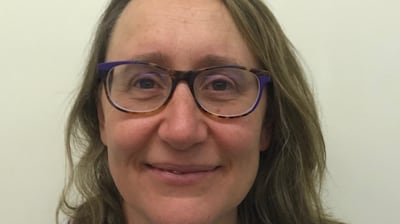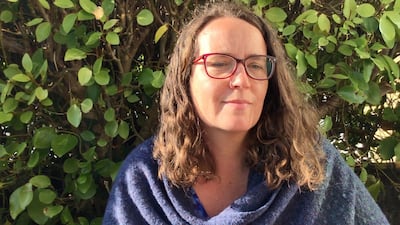When folklore researcher Cliona O'Carroll and immunologist Beth Brint from University College Cork came up with the idea to develop an online resource which mixed personal accounts of illness and death from infectious diseases with medical information about these diseases, they never thought their project would coincide with a global pandemic.
“Everyone’s an immunologist now,” jokes Brint, who says that public awareness of how infections spread and the role of vaccines to prevent severe disease and death has never been better.

But rather than overshadow their historical research, the experience of Covid has in fact had a knock on effect on the Catching Stories project by bringing people’s past experiences of fatal infectious diseases back to the surface.
"We were able to compare and contrast what happened in past epidemics with now. So for example when there was a polio outbreak in Dublin and Cork in the mid-1950s, many of the same measures on social distancing and reduction of social contacts were introduced – swimming pools and dance halls were shut and the GAA final between Cork and Dublin was cancelled," explains Brint.
O’Carroll explains that Covid gave them impetus for a parallel project – Chronicles of Covid-19. “And through this, we found that people were talking to the older generations about their experiences of previous epidemics.”

The Catching Stories project itself was started by O’Carroll and Brint three years ago as “a labour of love” when the two researchers decided “over a pint” that it would be useful to combine personal memories of diseases such as polio, measles and tuberculosis with an immunologist’s perspective on how infections spread and the importance of herd immunity in vaccination programmes.
O’Carroll, who is the director of the Cork Folklore Project, has drawn on the folklore archives to find personal poignant memories of past epidemics. “We had a West Cork farmer who remembered his father speaking about how two of his sisters died of the Spanish Flu,” she explains.
She says that it is fascinating to see how infectious diseases shaped people's lives and memories. "John Kelleher was a famous Echo newspaper seller in Cork city who told us his life story for the Cork Memory Map project in 2010. He starts his story by saying that his mother had a previous marriage but she lost her first husband to tuberculosis (TB) and her two sons from her first marriage to diphtheria and croup – all within a six month period."
We saw how in some hospitals in <a class="search" href='javascript:window.parent.actionEventData({$contentId:"7.1213540", $action:"view", $target:"work"})' polopoly:contentid="7.1213540" polopoly:searchtag="tag_location">Italy</a> that doctors didn't realise at first the importance of putting patients prone when treating Covid. This harks back to diseases such as polio
Another woman who contributed to the Cork folklore archive spoke about the impact of TB on her family. “TB was very socially unacceptable – nobody wanted anything to do with you if you had TB in the family. My aunt tells the story of how the Southern Health Board officials wanted to burn all our possessions [to prevent the spread of infection].”
Many people alive today have memories of the polio outbreaks in Ireland and on a personal note, my mother lost her oldest brother to polio in 1959. To this day, she clearly recounts how he suddenly became ill when visiting family in Donegal and died 10 days later. "He was sent to the Donegal Fever Hospital and then by ambulance to Cherry Orchard Hospital in Dublin where he was put in an iron lung but he never regained consciousness," she explains.
Brint says that there were some resonances of how the medical community grappled to treat Covid-19 at the beginning of the pandemic with past treatments such as the “iron lung” which was a negative pressure ventilator that encased most of the polio patient’s body to assist breathing.
"We saw how in some hospitals in Italy that doctors didn't realise at first the importance of putting patients prone (lying on their front) when treating Covid. This harks back to diseases such as polio which didn't have good interventions and medications," says Brint.
She explains how the use of the iron lung was made redundant in part to the development of better breathing therapies but primarily due to the development of the polio vaccine. The polio vaccine was introduced into Ireland in 1957 and the last recorded polio case in Ireland was in 1984. Pakistan and Afghanistan are the only two countries in the world where polio remains endemic.
Both researchers agree that one of the main drivers of the project is the realisation that personal stories resonate much better than medical information but that both are crucial for the public to understand the fatal impact of infectious diseases and the role of vaccination in eliminating them.
Brint says that before Covid, people had forgotten that these diseases could be killer diseases and that in the 1940s, around 1,000 children died every year in Ireland from diseases such as whooping cough, measles, diphtheria, polio and TB.
We see our project as contributing to the conversation around vaccination in ways that people can interact with
“Before the 1950s, infectious diseases were widespread in Ireland and they were gradually brought under control by vaccination drives and antibiotics. In many ways, vaccines had become a victim of their own success because people had forgotten the hugely damaging impacts of infectious diseases on families.”
O’Carroll adds that the realisation that “the community memory of infectious diseases was fading” drove their desire to create a resource for medical educators, public health doctors, schools and the general public to raise awareness of the importance of vaccination and herd immunity to prevent their resurgence.
And although Covid has sharpened our focus on the devastating impact of a new infectious disease, Brint points to measles as an example of an infectious disease which is on the rise again and can cause lifelong consequences including brain damage, blindness and hearing loss.
The Catching Stories website explains how measles remains one of the world’s most contagious diseases as one case of the measles can infect 12-18 unvaccinated people. And while the introduction of the measles vaccine in Ireland in 1985 reduced measles cases from 10,000 in 1985 to 201 in 1987, there has been significant outbreaks in some countries – including Ireland – since then because vaccine uptake levels aren’t high enough (ie not at herd immunity level) to prevent the spread of the disease.
“We see our project as contributing to the conversation around vaccination in ways that people can interact with. They can listen to other people’s stories and these stories are linked to an immunologist’s account of the disease,” says O’Carroll.
“We also hope that awareness of Covid and the importance of achieving herd immunity [to eliminate the disease] will filter through to impact on the update of other vaccines,” adds Brint.
Still a work in progress, O’Carroll and Brint are also building a physical archive of personal memorabilia and hoping to add information about people’s experiences of hospitals such as TB sanatoria.
They are keen to hear from people throughout Ireland about their experiences of infectious diseases from polio and measles to human papillomavirus (HPV) to Covid-19. Those interested in sharing their stories can go to corkfolklore.org.
















